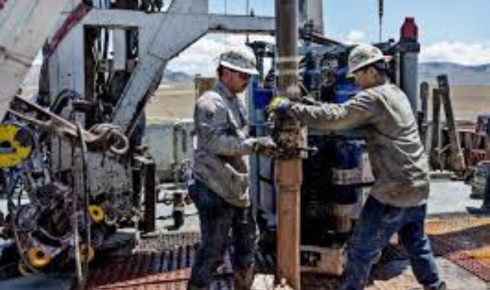Every now and then, a technology comes along that feels both futuristic and ancient at the same time. Geothermal energy is one of those rare marvels. It’s not flashy or loud, doesn’t rely on spinning turbines or massive solar arrays—it simply taps into the natural heat of the Earth. Beneath the surface, steady and patient, lies a renewable source of warmth and cooling that’s been waiting for us to notice it. And finally, people are paying attention.
In recent years, homeowners and business owners across Oklahoma have started asking more questions about geothermal heating and cooling. It’s quiet, efficient, sustainable, and once installed, it practically takes care of itself. But before diving into what makes it so special, let’s take a closer look at what it really means to work with geothermal contractors near me and why finding the right professionals makes all the difference.
The Subtle Genius Beneath Your Lawn
Picture this: a few feet below your backyard, the ground maintains a consistent temperature year-round—somewhere between 50 and 60 degrees Fahrenheit. No matter how brutally hot the Oklahoma summer gets, or how icy the winter becomes, that underground temperature doesn’t budge much. That’s the foundation of geothermal systems.
Instead of burning fuel or battling outdoor air like traditional HVAC systems, geothermal units simply move heat around. In the winter, they pull warmth from the ground into your home. In the summer, they reverse the process, sending heat back into the earth where it belongs. The result? Smooth, consistent comfort without wild temperature swings or outrageous utility bills.
It’s the kind of simple genius that makes you wonder why everyone isn’t already doing it.
The Oklahoma Advantage
Here’s the thing: not every place is perfect for geothermal, but geothermal oklahoma is a match made in environmental heaven. The state’s unique geography—wide open land, moderate soil conditions, and generally stable groundwater temperatures—creates ideal conditions for efficient geothermal systems.
While some states have to drill deep or deal with rocky terrain, Oklahoma’s soil composition makes installations relatively straightforward. That means less disruption, lower installation costs, and better long-term performance. It’s one of those rare moments where nature and technology play on the same team.
And there’s another bonus: Oklahoma homeowners know all too well how unpredictable the weather can be. Sweltering summers. Ice storms. Tornado seasons that keep you on edge. A geothermal system doesn’t just handle those extremes—it thrives through them. It’s not affected by outdoor temperatures, meaning no matter what chaos the weather brings, your home stays comfortably balanced inside.
The People Who Make It Possible
Of course, installing a geothermal system isn’t exactly a DIY weekend project. It requires precision, experience, and an understanding of both HVAC systems and earth science. That’s where the right professionals come in.
Good geothermal contractors don’t just drill holes and lay loops—they design systems tailored to your property, soil type, and climate. They calculate heating and cooling loads, evaluate your home’s insulation, and figure out how to achieve the best performance possible.
If you’re searching for professionals to handle your system, don’t just look for general HVAC companies that “also do geothermal.” You want specialists—people who’ve done it dozens, even hundreds of times. These systems last for decades, so the installation needs to be done right the first time.
A reputable contractor will take the time to explain the process, from loop placement to expected savings. And they won’t disappear after installation—they’ll be around for maintenance and system checks long after your home starts reaping the benefits.
Why More Oklahomans Are Making the Switch
Cost savings are usually the first thing people notice, and for good reason. After the initial investment, geothermal systems can cut your energy bills by 40–70%. Over time, that’s a massive difference. Add in the federal tax incentives and local energy rebates, and the upfront cost doesn’t seem nearly as intimidating.
But it’s not just about the money. There’s a certain satisfaction in knowing your comfort doesn’t come at the planet’s expense. Geothermal systems use renewable energy, producing no on-site emissions. They’re whisper-quiet, free from outdoor compressor noise, and they can last twice as long as traditional HVAC units.
For families looking for both eco-friendliness and reliability, geothermal offers the best of both worlds. It’s not about trendy sustainability—it’s about practical, long-term living.
What to Expect When You Go Geothermal
Every property is different, but here’s the general idea:
- Site Evaluation – The contractor visits your property to study soil conditions, available land, and your home’s energy requirements.
- Design Phase – They create a custom system that fits your property layout. Loops can be vertical (for smaller yards) or horizontal (for larger spaces).
- Installation – Trenches or boreholes are created, piping is laid, and the system is connected to your indoor unit.
- Testing and Calibration – Everything is pressure-tested, balanced, and adjusted for optimal performance.
From start to finish, the process usually takes a few days to a couple of weeks depending on property size and design complexity. Once it’s up and running, you’ll barely know it’s there—except when you open your utility bill and smile.
That’s the magic of professional geothermal services: long-term efficiency with barely any effort on your part.
The Longevity Factor
Geothermal systems are built for the long haul. The underground loops can last up to 50 years, and the indoor units often run 20–25 years with minimal maintenance. Compare that to a traditional air conditioner or furnace, which typically needs replacing every 10–15 years.
This longevity makes geothermal one of the most financially sound investments in home comfort. And because it doesn’t rely on fossil fuels or combustion, it’s inherently safer and cleaner. There’s no carbon monoxide risk, no gas leaks, no pilot lights going out on cold nights. Just consistent, steady heating and cooling.
The Quiet Comfort of Knowing You Chose Well
Once your system’s installed, it’s almost invisible—no noisy outdoor units, no clunky vents or air blasts. The comfort feels natural, not forced. Many homeowners say their geothermal systems create a kind of “even comfort” that feels different from anything they’ve experienced before.
And maybe that’s part of the appeal. It’s not just about saving money or reducing your carbon footprint. It’s about simplicity. About letting your home exist in harmony with the planet, instead of constantly fighting against it.
Looking Ahead
Oklahoma has always had a complicated relationship with energy. From oil rigs to wind turbines, it’s been a state that understands power in all its forms. But geothermal represents something more personal—a direct connection between your home and the land beneath it.
As technology improves and awareness spreads, geothermal could become as common as central air. And with each installation, Oklahoma takes one more quiet step toward energy independence and environmental balance.
So, if you’ve been thinking about making your home more efficient, comfortable, and sustainable, maybe it’s time to start the search. Ask around, read reviews, and find experienced geothermal contractors near me who know this land and its potential.
Because the future of home comfort in Oklahoma might not be above us—it’s right beneath our feet, steady, quiet, and waiting to be tapped.

